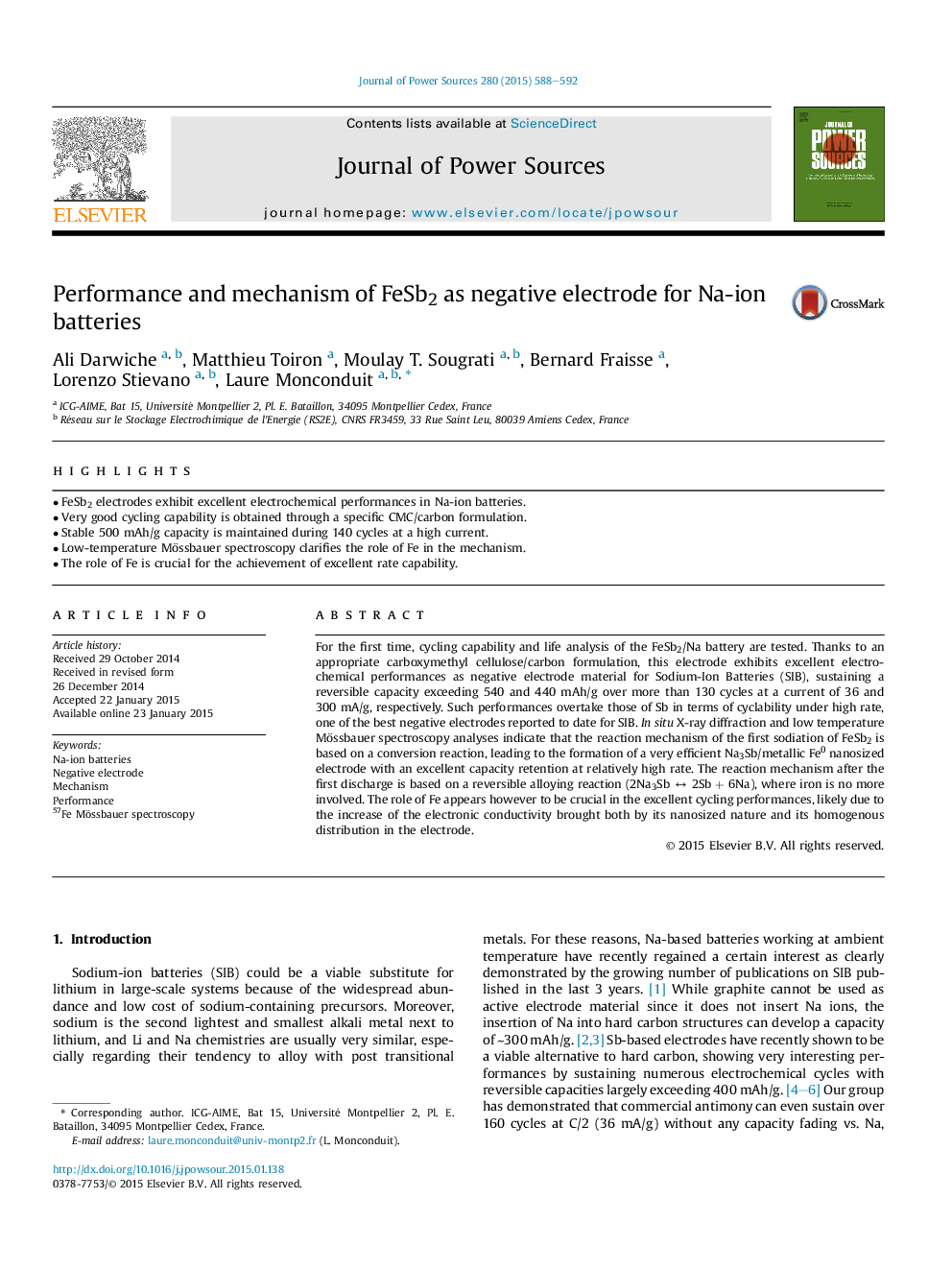| Article ID | Journal | Published Year | Pages | File Type |
|---|---|---|---|---|
| 7733733 | Journal of Power Sources | 2015 | 5 Pages |
Abstract
For the first time, cycling capability and life analysis of the FeSb2/Na battery are tested. Thanks to an appropriate carboxymethyl cellulose/carbon formulation, this electrode exhibits excellent electrochemical performances as negative electrode material for Sodium-Ion Batteries (SIB), sustaining a reversible capacity exceeding 540 and 440 mAh/g over more than 130 cycles at a current of 36 and 300 mA/g, respectively. Such performances overtake those of Sb in terms of cyclability under high rate, one of the best negative electrodes reported to date for SIB. In situ X-ray diffraction and low temperature Mössbauer spectroscopy analyses indicate that the reaction mechanism of the first sodiation of FeSb2 is based on a conversion reaction, leading to the formation of a very efficient Na3Sb/metallic Fe0 nanosized electrode with an excellent capacity retention at relatively high rate. The reaction mechanism after the first discharge is based on a reversible alloying reaction (2Na3Sb â 2Sb + 6Na), where iron is no more involved. The role of Fe appears however to be crucial in the excellent cycling performances, likely due to the increase of the electronic conductivity brought both by its nanosized nature and its homogenous distribution in the electrode.
Related Topics
Physical Sciences and Engineering
Chemistry
Electrochemistry
Authors
Ali Darwiche, Matthieu Toiron, Moulay T. Sougrati, Bernard Fraisse, Lorenzo Stievano, Laure Monconduit,
